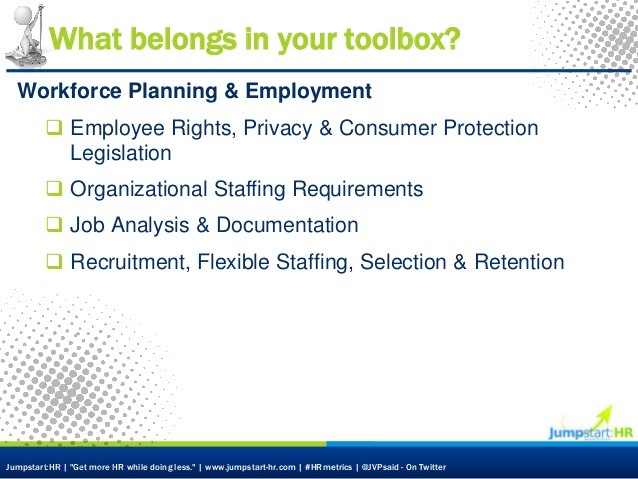13 Best HR Workforce Metrics Formula Examples
Post on: 16 Март, 2015 No Comment

A couple weeks I wrote about HR Metrics being the key to HRs seat at the executive table given the fact that the HR and recruiting departments are non-income generating, having solid metrics are key to demonstrating to senior leaders and executives how strategic HR initiatives can help affect an organizations bottom line. But HR is more than just CPM or cost per hire so while the SHRM task force debates another two years, I thought it would only be fair to share with you some of my favorite human resources measurement examples, metrics, and formulas to help demonstrate and capture the value that your team brings to the table.
Strategic HR Metrics Examples
- Monthly Turnover Rate = (number of separations during month / average number of employees during month) x 100).
- Revenue per Employee = total revenue / total number of employees. This is especially important when evaluating the cost of a lost employee due to voluntary or involuntary turnover.
- Yield Ratio = percentage of applicants for a recruitment source that make it to a determined stage of the application process.
- Human Capital Cost = Pay + Benefits + Contingent Labor Cost / Full Time Equivalents.

- HR to Staff Ratio = Employees / Human Resources Team Members. This ratio is important since during the recession HR departments have reduced in number dramatically. HR serves as the internal customer support staff just like call center customer service employees serve as external facing.
- Return on Investment = (total benefit – total costs) x 100.
- Promotion Rate = Promotions / Headcount.
- Percentage Female at Management Level = Female Management Level Employees/Management Level Headcount. This formula can also be used when evaluating executives at a female level and other diversity categories like veterans and race.
Human Resource Metrics Examples
- Employee Absence Rate = number of days in month / (average number of employees during month x number of days). I have used this analysis to look at employee absence rates for different departments and managers. Sometimes the best way to determine if their is a culture or manager opportunity is through evaluating the percentage of absences by department or manager.
- Workers Compensation Cost Per Employee = total workers compensation cost for year / average number of employees.
- Workers Compensation Incident Rate = (number of injuries and/or illnesses per 100 full-time employees ∕ total hours worked by all employees during the calendar year) x 200,000.
- Overtime per Individual Contributor Headcount = Overtime Hours/Individual Contributor Headcount.
- Average Employee Age = Total Age of Employees / Headcount. This is an important metric in my mind when looking at succession planning and forecasting staffing areas of opportunity as older workers begin to consider retirement. Also an important metric when calculating benefits cost for your organization.
Some people call leveraging metrics as part of your HR strategy an evidence-based HR practitioner. I like to think of it as a smart organizational business partner who specializes in workplace analytics to drive these type of business decisions. Part of being a well-rounded human resource professional who has the entire organization in mind when developing people strategy and other HR programs uses metrics, examples, analytics, and formulas to determine a programs success or as part of any type of analysis, SWOT included.
Are there any metrics you use on a regular basis that I may have missed? Leave a comment below, and lets start a conversation on how you leverage HR metrics as part of your human resource and recruitment department.
Learn more about how metrics and analytics impact hiring & retention. Register for 1 Pages Workforce & HR Analytics on 2/26/14 at 11 AM PST by clicking here .














